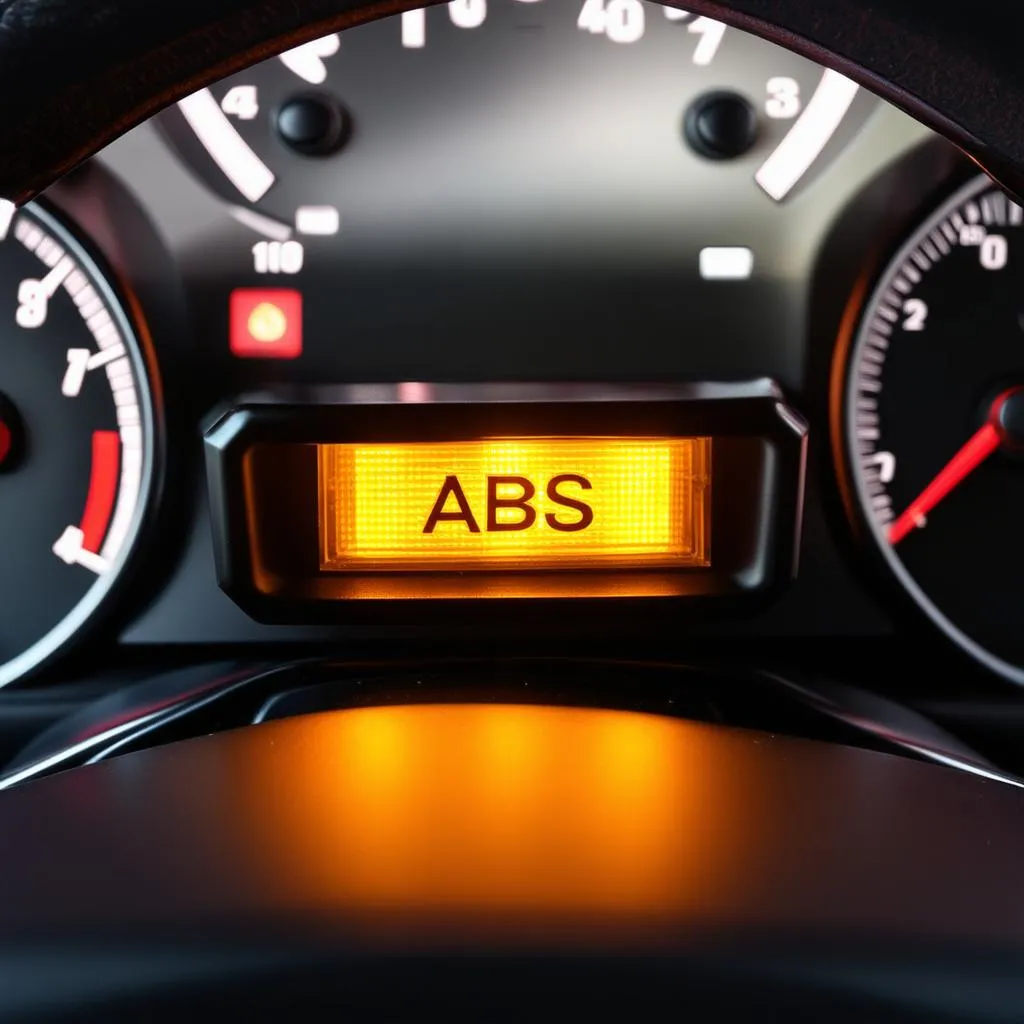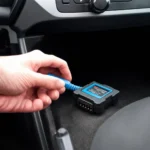Have you ever been driving down the road, maybe on a rainy day in Seattle, and suddenly a yellow light pops up on your dashboard – the dreaded ABS light? Don’t panic, you’re not alone. The ABS, or Anti-lock Braking System, light is a common concern for many car owners. But “why is my ABS light on?” is a question best answered with a deeper understanding of this crucial safety feature.
What Does the ABS Light Mean?
Let’s break it down. The ABS light is your car’s way of telling you something might be amiss with its braking system. Think of it like your car sending an S.O.S. signal.
From a mechanic’s perspective: The ABS light indicates a potential fault detected within the system, which could range from a faulty sensor to a problem with the ABS module itself.
From an automotive engineering standpoint: The ABS light illuminates when the system’s self-diagnostic function detects an irregularity that could affect its ability to prevent wheel lockup during braking.
Ignoring this light could compromise your safety and the safety of others on the road. It’s always best to address the issue sooner rather than later.
Decoding the ABS Light: Common Reasons and Solutions
While a mechanic with a dealer scanner for European cars, such as those made by Autel, can pinpoint the exact issue, here are some common culprits behind the illuminated ABS light:
1. Faulty ABS Wheel Speed Sensor
The Issue: Imagine driving down the Autobahn in Germany, your car needs to know how fast each wheel is spinning to apply the right amount of braking force. This is where the wheel speed sensors, often located near the wheel hub assembly, come into play. A faulty sensor can send incorrect signals to the ABS module, triggering the warning light.
The Solution: A mechanic can diagnose a faulty sensor using a specialized scanner and replace it, restoring your ABS system to its full glory.
2. Worn Out Brake Pads
The Issue: You’re cruising down Rodeo Drive in your sleek Italian sports car. As you brake for a stoplight, your brake pads wear down. If they wear down too thin, they can trigger the ABS light as the system senses an inconsistency in braking pressure.
The Solution: Regular brake pad inspections and timely replacements can prevent this issue and keep your ABS light at bay.
3. Low Brake Fluid Level
The Issue: Picture this: You’re navigating the busy streets of London. Your brake fluid, the lifeblood of your car’s braking system, is running low. Low brake fluid levels can disrupt the ABS system’s hydraulic pressure, turning on the warning light.
The Solution: Regularly checking and topping up your brake fluid levels can prevent this issue and ensure your ABS system functions optimally.
4. Malfunctioning ABS Module
The Issue: Imagine driving through the winding roads of the Swiss Alps. The ABS module, the brain of the entire system, malfunctions. This is a more serious issue that requires immediate attention from a qualified mechanic.
The Solution: A mechanic can diagnose a faulty ABS module using a diagnostic scanner. Depending on the severity, the module might need repairs or replacement.
Don’t Ignore the Warning Signs!
Remember, the ABS light is your car’s way of communicating a potential problem. “Why is my ABS light on?” is a question best answered by a professional mechanic.
“Ignoring the ABS warning light is like ignoring a flashing ‘check engine’ light,” says automotive expert John Miller, author of “The Complete Guide to Automotive Braking Systems.” “It’s crucial to have your vehicle inspected by a qualified mechanic to diagnose and address the root cause of the problem.”
Have More Questions about Your Car’s ABS System?
Here are some related questions you might find helpful:
- How much does it cost to fix an ABS light?
- Can I drive with the ABS light on?
- How do I know if my ABS sensor is bad?
- Can low tire pressure cause the ABS light to come on?
Need help troubleshooting your car’s ABS system? Contact us on WhatsApp at +84767531508. Our team of expert mechanics is available 24/7 to assist you with all your car repair needs.
You can also find more helpful articles and resources on car maintenance and repair on our website. Check out our guides on the Autel AL619 Autolink ABS/Airbag OBDII Scan Tool and Autel ABS Brake Bleed Scanner Tool for more information on diagnosing and resolving ABS-related issues.
Remember, a well-maintained car is a safe car. Don’t ignore the warning signs – address them promptly to ensure your safety and the longevity of your vehicle.



